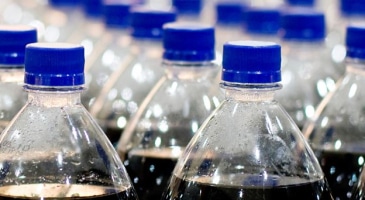With the arctic temperatures finally behind us, many people are saying goodbye to hot cocoa by the fireside and hello to barbecues, summer festivals and outdoor events. As these fun-filled summer events kick off, it’s no surprise that so does a spike in the sale of bottled beverages, particularly in wine, spirits, and beer. In recent reports, it was found that the consumption of alcoholic beverages surpassed that of bottled water in 2012, making it the second largest beverage category consumed in the U.S. (U.S. Beverage Alcohol Trends).While the Memorial Day barbecue you recently went to may have been a blast, getting your favorite alcoholic beverage to the picnic table isn’t all fun and games. Government regulations, Customs clearance and trend forecasts are only a few of the challenges the alcohol supply chain faces before the product meets retail shelves.In the United States, the law mandates that alcoholic beverages must pass through a three-tier system before consumers can purchase them. The system is composed of the following levels:
Regulations and Rules
Since many of your favorite wines or craft beers are imported from various parts of the world, they must travel through U.S. Customs in order to make it to the distribution centers. Successfully navigating through import clearance is challenging for any commodity, and alcoholic beverages further complicate this process. In the United States, alcoholic beverages are ruled by the following three agencies:
- The Alcohol and Tobacco Tax and Trade Bureau- All package labels are required to obtain a Certificate of Label Approval. Without approval, Customs will reject entry.
- The Federal Food and Drug Administration– Requires all foreign alcohol manufacturers to register with the FDA Food Facility Registration Regulation
- The Customs and Border Protection Agency– Requires imports to have a Certificate of Origin, which determines duty rates, sanctions against specific products or countries, and any violations of U.S. trade quotas.
In addition to the submitting the paperwork in association with the above regulations, you must file for entry, pay the excise tax and import fees before any of the alcoholic beverages can be moved into the United States.
Trend Forecasting
In addition to the Custom challenges, distributors must keep up with the ever-changing consumer demands. In order to accurately forecast trends, historical sales, retail opinions, seasonal changes and market demographics all need to be taken into account. It is important for distributors to maintain minimum inventory levels to produce major cost savings and avoid overstock. An overstock of certain products, such as higher end wines, ties up capital and takes up unnecessary space. Similarly, an overstock of beer can create problems due to its predetermined shelf life.While the activities associated with alcohol consumption may be fun-filled, the system beverages must flow through beforehand is not. If there is any disruption in the supply chain, not only are distributors and retailers affected, but consumers are as well.

